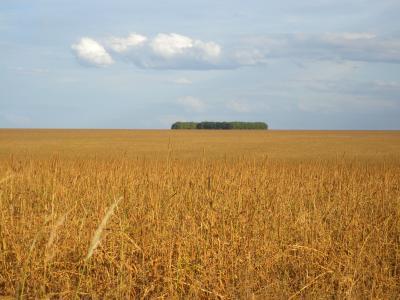Approved in 2012, Brazil's new Forest Code has few admirers. Agricultural interests argue that it threatens the livelihoods of farmers. Environmentalists counter that it imperils millions of hectares of forest, threatening to release the billions of tons of carbon they contain. A new study, co-authored by Woods Hole Research Center (WHRC) scientists Michael Coe, Marcia Macedo and Brazilian colleagues, published this week in Science, aims to clarify the new law. Entitled "Cracking Brazil's Forest Code," the article is the first to quantify the implications of recent changes to the Forest Code and identify new opportunities and challenges for conservation.
The Brazilian Forest Code is the largest single protector of forests on private properties, which contain over half of Brazil's remaining forests and savannahs. Though championed by conservationists, the law has proved challenging to enforce. As global demand for beef and animal feed increased in the early 2000s, annual deforestation in the Brazilian Amazon surged to more than 20,000 km2 per year - prompting global outrage and a redoubling of efforts to improve enforcement. These pressures inspired a backlash from agribusiness interests, who lobbied to reduce the burden put on landowners to conserve and restore forests.
The new Forest Code is the product of a long and bitter debate in the Brazilian congress, fueled by tensions between the agribusiness lobby, government enforcement agencies, and conservationists. According to the study, the new law granting amnesty to landowners who deforested illegally before 2008, reduces the area to be reforested from 500,000 km2 to 210,000 km2. "The agribusiness lobby should see this as a big win," explains lead author Britaldo Soares-Filho of the Federal University of Minas Gerais (UFMG,) "but if they continue to boycott and sabotage the Forest Code, they will be shooting themselves in the foot." Ultimately, he warns, "agricultural productivity depends on the conservation of native ecosystems and the climate stability they provide."

This image shows deforestation.
(Photo Credit: Marcia Macedo)
The recent changes affect conservation in all Brazilian biomes, including the Amazon, Cerrado, and Atlantic Forest. "Brazil has done a great job reducing deforestation in the Amazon, but the other biomes have been short-changed in the process," notes Dr. Macedo. Only 50% of the Cerrado forest remains intact and deforestation is increasing. This study estimates that the new law allows legal deforestation of an additional 400,000 km2 of the Cerrado, "That's an area almost the size of California. Allowing that to happen would be an environmental disaster," emphasizes Dr. Macedo.
Despite big losses for the environment, the law also introduced two key conservation measures that could pave the way for commoditizing standing forests in all biomes. First, it creates a new market that allows landowners to trade surplus forests (those that could be legally deforested) on one property, to offset restoration requirements on another. The study found that, if fully implemented, this could reduce the areas requiring restoration to as little as 5,500 km2 of arable land. The new law also creates an online land registry system that streamlines the process for landowners to register their property boundaries and environmental information. More advanced monitoring and documentation of over 5 million rural properties will dramatically improve enforcement. According to Dr. Coe, "No other country has attempted a registry of this scale. By allowing greater transparency, the system has the potential to help improve compliance and therefore become a big win for the environment."
The Forest Code continues to be difficult to enforce and some worry that the amnesty provided for illegal deforestation may set a dangerous precedent, creating the expectation of impunity for future deforestation. "To be effective, the Forest Code must be tied to economic incentives that reward landowners who conserve native vegetation," says co-author Raoni Rajão of UFMG.
Fortunately, private initiatives have sprung up to support compliance in the form of international certification standards, commodity roundtables, and boycotts of products produced on newly deforested land. New public initiatives like Brazil's Low-Carbon Agriculture Program, which provides US$1.5 billion in annual subsidized loans to improve agricultural production, while reducing associated carbon emissions, are also key. Such initiatives will be critical if Brazil hopes to succeed in reconciling environmental conservation and agricultural development.






Comments